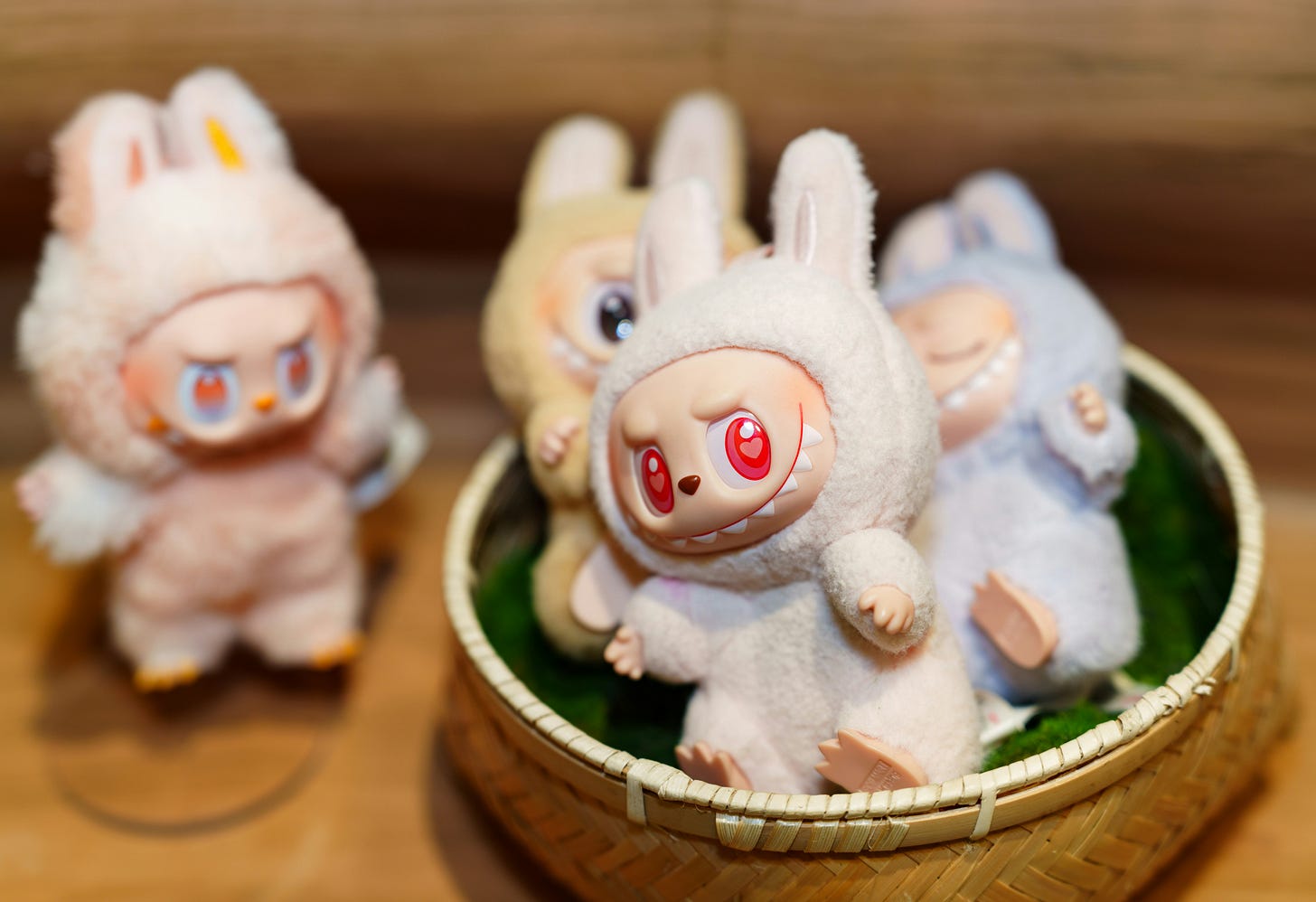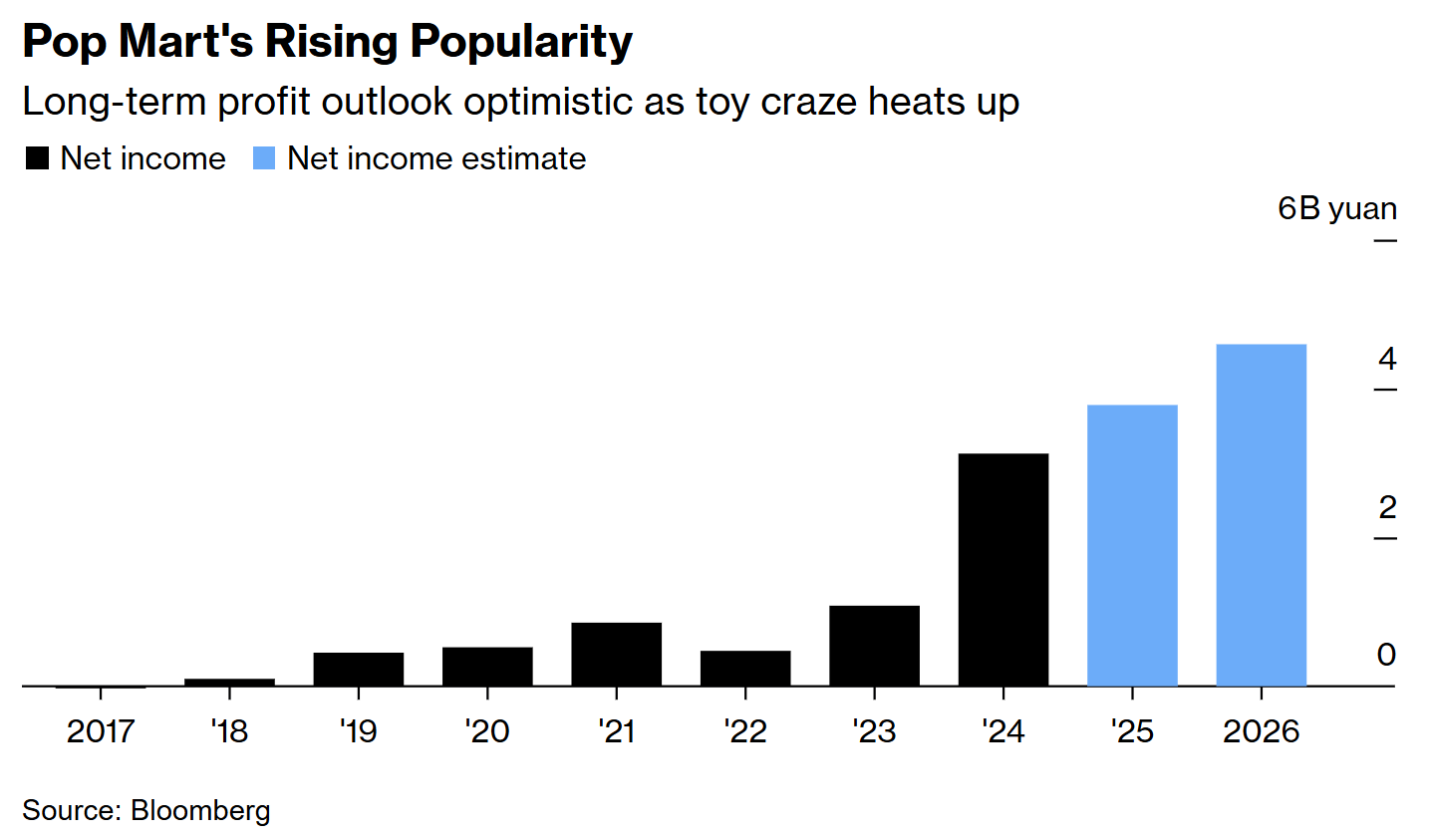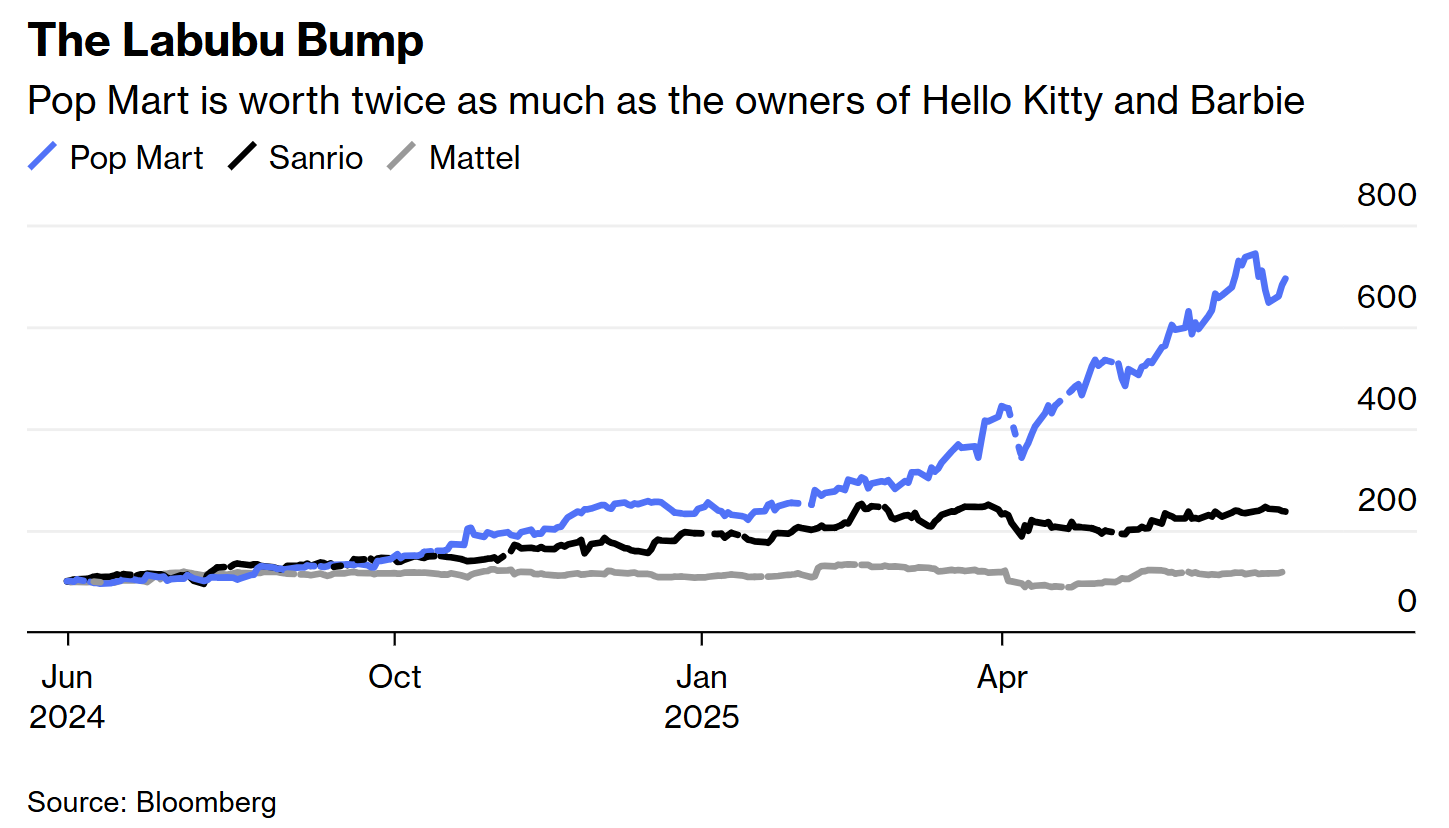
Labubu, a creepy-cute plush monster, is the hottest collectible among Millennials. It’s powering a $42B business built on tangible goods in a digital age.
Meet Labubu, a pointy-eared, snaggletoothed plush monster that looks like it crawled out of a Tim Burton fever dream. Launched by Chinese retailer Pop Mart in 2019, the stuffed animal has become a global phenomenon.
Labubu is a collectible designer toy, often worn as a keychain. While it may look like a children’s toy, Labubu is mostly bought by young adults who treat it like a collectible fashion piece or a miniature work of pop art. Style icons like David Beckham, Rihanna, and Kim Kardashian have all been seen with one in tow. And TikTok is flooded with unboxing videos: The hashtag #Labubu has over 2.3 million posts.
Each figure is sold in a “blind box,” meaning buyers don’t know which version they’re getting until they open it. Limited-edition releases can sell out in seconds, and fans will make multiple purchases to increase their odds of collecting a full set. Common versions retail for as little as $15, while rare editions have fetched six figures at auction. At a Beijing auction in April, one giant-sized Labubu sold for $150,000 (roughly 1M yuan).
Behind the fan frenzy is a booming company cashing in on the craze.
In 2024, Pop Mart reported 13.0B yuan ($1.8B) in revenue, up nearly +107% YoY. Net income surged +188% to 3.1B yuan ($427M). In the first half of 2025, the trend steepened: Pop Mart expects revenue to double and profits to rise more than +350% YoY. International sales have become a major driver. In Q1 2025, European sales rose +600% YoY, and US sales surged 900% YoY.

What’s more, Pop Mart’s stock (9992-HK) has surged +527% over the last year. And it now has a market cap of over $42 billion, larger than Hasbro, Mattel, and Sanrio, the makers of Hello Kitty.

Why are young adults splurging on toys? Millennials and Homelanders may live online, but their desire for physical collectibles remains—or even intensifies, as a way to compensate. The same impulse has fueled the revival in vinyl records. (See “Vinyl Overtakes CDs.”) From board games like chess to miniature construction projects like Lego flowers, today’s young adults are drawn to toys that offer both a tactile experience and a hint of nostalgia, think Beanie Babies with a modern twist. It helps if there’s also a social dimension, as with mah-jongg parties. Labubu’s ghoulish aesthetic, in particular, appeals to Millennial hipsters looking for something offbeat and irreverent. (See “LEGO: New Stress Reliever for Adults.”)
It’s also worth noting that the brand’s first viral moment came when Blackpink’s Lisa, K-pop’s biggest star, posted a photo with a Labubu. We have often written about the growing interest in Korean culture, from music to movies. Now, K-pop icons can spur billion-dollar trends. (See “Music Industry Booms in First Half of 2023” and “Mandarin Enrollment Plummets.”) Remember: For many Millennials and Homelanders, pop culture isn’t just about entertainment; it’s about affinity consumption choices across the goods and services spectrum.




Reminds me of a Monchhichi.
https://en.wikipedia.org/wiki/Monchhichi
Doesn't every generation come up with at least one of these mini-gods to inexplicably adore?